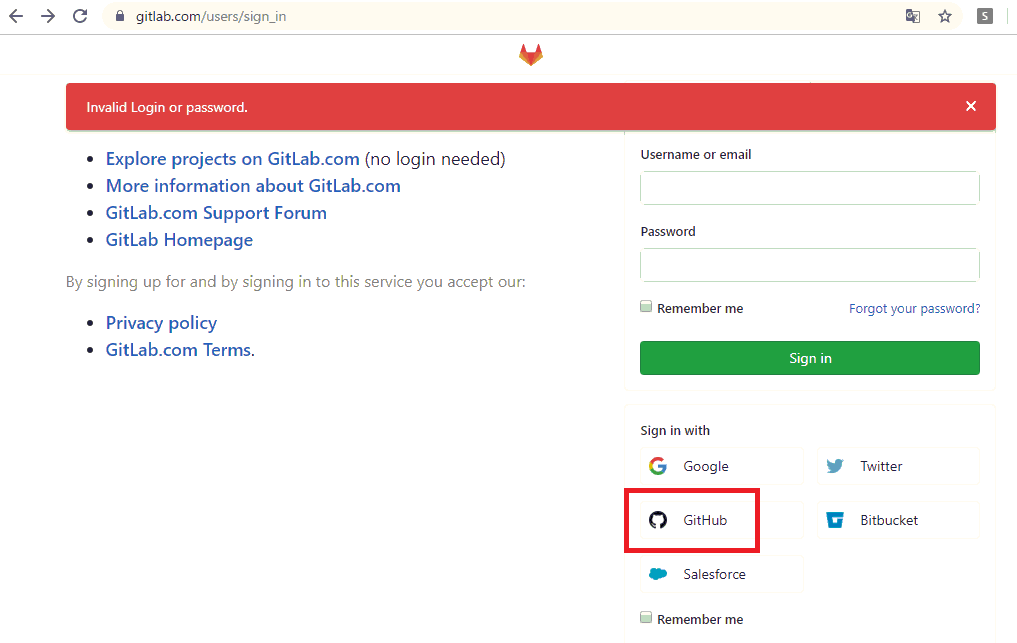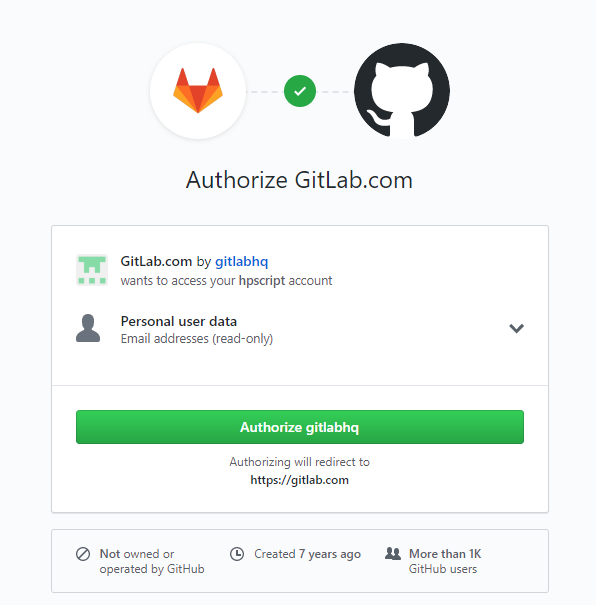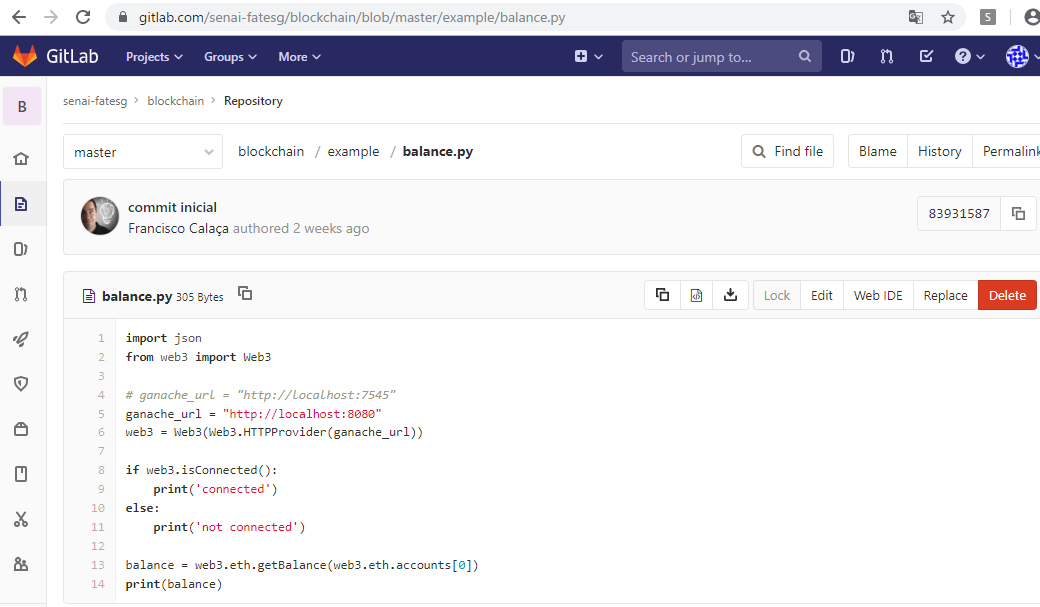GitLabはグループ・プライベートレポジトリが作れる
無償版Community Editionと有償版Enterprise Editionがある
Railsで作成されている
gitlabにgithubのアカウントでログインしようとしたら、Invalid Login or password。おかしいなと思ったら、”sigin in with”のところでauthする必要があったのね。


使い方はgithubと似ていそうですね。

ソフトウェアエンジニアの技術ブログ:Software engineer tech blog
随机应变 ABCD: Always Be Coding and … : хороший
GitLabはグループ・プライベートレポジトリが作れる
無償版Community Editionと有償版Enterprise Editionがある
Railsで作成されている
gitlabにgithubのアカウントでログインしようとしたら、Invalid Login or password。おかしいなと思ったら、”sigin in with”のところでauthする必要があったのね。


使い方はgithubと似ていそうですね。

import numpy as np
from scipy.fftpack import fft
import matplotlib.pyplot as plt
N = 2**20
dt = 0.0001
f1, f2 = 5, 8
A1, A2 = 5, 0
p1, p2 = 0, 0
t = np.arange(0, N*dt, dt)
freq = np.linspace(0, 1.0/dt, N)
y = A1*np.sin(2*np.pi*f1*t + p1) + A2*np.sin(2*np.pi*f2*t + p2)
yf = fft(y)/(N/2)
plt.figure(2)
plt.subplot(211)
plt.plot(t, y)
plt.xlim(0, 1)
plt.xlabel("time")
plt.ylabel("amplitude")
plt.subplot(212)
plt.plot(freq, np.abs(yf))
plt.xlim(0, 10)
#plt.ylim(0, 5)
plt.xlabel("frequency")
plt.ylabel("amplitude")
plt.tight_layout()
plt.savefig("01")

ちょっと待て、
scipyって何?
matplotlibの基本的な使い方は?
対応する成分同士を掛け算してそれらの和を取る
ベクトルとベクトルの内積はスカラーになる
内積の記号は
直行条件とは、なす数が90°(cos90°=0)
法線ベクトル:全ての接線と直交するベクトル
[vagrant@localhost ipa]$ yum list installed | grep postgres
postgresql.x86_64 8.4.20-8.el6_9 @base
postgresql-devel.x86_64 8.4.20-8.el6_9 @base
postgresql-libs.x86_64 8.4.20-8.el6_9 @base
postgresql96.x86_64 9.6.15-1PGDG.rhel6 @pgdg96
postgresql96-devel.x86_64 9.6.15-1PGDG.rhel6 @pgdg96
postgresql96-libs.x86_64 9.6.15-1PGDG.rhel6 @pgdg96
postgresql96-server.x86_64 9.6.15-1PGDG.rhel6 @pgdg96
psqlが8.4を読み込んでいるため、「Your PostgreSQL is too old」のエラーが出る
まず、psqlにログインして、実行ファイルを探します
[vagrant@localhost ipa]$ su – postgres
パスワード:
-bash-4.1$ which -a psql
/usr/bin/psql
Berkshelf is a tool to manage Chef cookbooks and their dependencies.
If you define a cookbook to be used for the definition file, you can eliminate depedencies automatically from the repository.
[vagrant@localhost test]$ gem install mixlib-archive -v 0.4.20
[vagrant@localhost test]$ gem install mixlib-config -v 2.2.18
[vagrant@localhost test]$ gem install berkshelf
Fetching: fuzzyurl-0.9.0.gem (100%)
Successfully installed fuzzyurl-0.9.0
Fetching: chef-config-15.1.36.gem (100%)
Successfully installed chef-config-15.1.36
Fetching: builder-3.2.3.gem (100%)
Successfully installed builder-3.2.3
Fetching: erubis-2.7.0.gem (100%)
Successfully installed erubis-2.7.0
Fetching: gssapi-1.3.0.gem (100%)
Successfully installed gssapi-1.3.0
Fetching: gyoku-1.3.1.gem (100%)
Successfully installed gyoku-1.3.1
Fetching: httpclient-2.8.3.gem (100%)
Successfully installed httpclient-2.8.3
Fetching: little-plugger-1.1.4.gem (100%)
Successfully installed little-plugger-1.1.4
Fetching: logging-2.2.2.gem (100%)
Successfully installed logging-2.2.2
Fetching: nori-2.6.0.gem (100%)
Successfully installed nori-2.6.0
Fetching: rubyntlm-0.6.2.gem (100%)
Successfully installed rubyntlm-0.6.2
Fetching: winrm-2.3.2.gem (100%)
Successfully installed winrm-2.3.2
Fetching: rubyzip-1.2.3.gem (100%)
Successfully installed rubyzip-1.2.3
Fetching: winrm-fs-1.3.2.gem (100%)
Successfully installed winrm-fs-1.3.2
Fetching: train-core-2.1.13.gem (100%)
ERROR: Error installing berkshelf:
There are no versions of train-core (>= 2.0.12, ~> 2.0) compatible with your Ruby & RubyGems. Maybe try installing an older version of the gem you’re looking for?
train-core requires Ruby version >= 2.4. The current ruby version is 2.3.0.
なにいいいいいいいいいいいいいいいいいいいい
preg_match("/^([a-zA-Z0-9])+([a-zA-Z0-9\?\*\[|\]%'=~^\{\}\/\+!#&\$\._-])*@([a-zA-Z0-9_-])+\.([a-zA-Z0-9\._-]+)+$/", $mailaddress)
あれ。。。
[vagrant@localhost ~]$ nvm install v10.12.0
Downloading and installing node v10.12.0…
Downloading https://nodejs.org/dist/v10.12.0/node-v10.12.0-linux-x64.tar.xz…
######################################################################## 100.0%
Computing checksum with sha256sum
Checksums matched!
Now using node v10.12.0 (npm v6.4.1)
[vagrant@localhost ~]$ nvm use v10.12.0
Now using node v10.12.0 (npm v6.4.1)
[vagrant@localhost ~]$ node -v
v10.12.0
[vagrant@localhost ~]$ npm -v
6.4.1
The term “holacracy” refers to social technology or organizational governance management to maintain a self-propelled organization by distributing authority and making decisions throughout the organization rather than making decisions through traditional top-down hierarchies. It is defined as the method.
state of the artの略?
NetFlow is a technology developed by Cisco Systems, Inc for monitoring and analyzing network traffic information. Implemented primarily in Cisco routers and switches, it is now becoming the industry standard in flow measurement and is now supported by many vendors’ network devices. Analyze flow information such as NetFlow to identify operational or security issues, strengthen external or internal network security.
What is flow in network traffic analysis is like a packet group with common attributes flowing on the network. For example, attributes such as source / destination IP address, source / destination port number, protocol number.
If common, the packet is considered as the same flow. In an easy-to-understand example, if a user uploads a file to the server, the processing in that case is regarded as one flow(in terms of packets, it is a block of multiple packets wit common attributes). By analyzing this flow information, it is possible to monitor and analyze traffic on a per-suer or per-application basis.